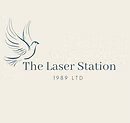Frequently Asked Questions - All FAQs

Not all colours can be removed by laser.
The Q-Switched Nd:YAG lasers have 2 wavelengths to treat different colours:
1064nm - Targets Black & Dark Inks
532nm - Targets Red and Orange
For more information on what colours different types of lasers can treat follow this link
No, using the Fitzpatrick Skin Typing system you can only safely treat up to Skin Type 4 without risking taking out the natural pigment of the skin.
The treatment can take between 5 and 30 minutes, longer sessions could cause too much trauma to the skin so are not recommended, this means that larger tattoos need to be treated in several separate sittings.
Depending on the tattoo and the result required (removal or cover up) up to 12 or more sessions may be required. Do not be surprised, however, if the removal of your tattoo takes more sessions than that. Each person and each tattoo is unique so the number of treatment sessions you will need can vary.
These sessions will be between 6 - 8 weeks apart. Sometimes longer may be needed depending on your body's capabilities to dispel the ink and skin healing properties.
The removal of a tattoo is a long process and clients are advised to be patient.
Lasers will cause some discomfort and it is usual to experience a small amount of pain in the area afterwards (like you do after having a tattoo)The laser pulses have been likened to having your skin 'pinged' with an elastic band. this is usually tolerated by most people without any anaesthetic.
However, some areas can prove more sensitive than others, especially around the ankles or the shoulder blade. Fortunately, the discomfort does decrease as treatment progresses and the tattooing fades. In our experience most patients will tolerate the discomfort of treatment well.
Our CompactPlus Q-Switched Nd:YAG laser is manufactured in China.
This particular laser produces a very high power in quick pulses. The light energy produced tends to pass through normally pigmented skin and specifically targets the pigment on the tattoo ink deep in the dermis layer. As the ink absorbs this light energy, the ink breaks down into smaller particles which is then evacuated from the body through normal immune response. As the ink particles are removed, the tattoo begins to fade.
Tattoo removal lasers are very safe for use when used by a trained laser operator with proper safety equipment (goggles to protect the eyes).
The radiation emitted by a tattoo removal laser is non-ionizing and carries no risk of cancer or other abnormal cell growth.
Straight after treatment the area will feel hot and skin will form small white 'blisters', these are water vapour spots created by the intense heat under the skin, and might be flat or slightly raised. This is due to the release of microscopic steam bubbles in your skin. This change usually lasts no more than a few minutes before it disappears, this is perfectly normal and a good sign that the treatment is working.
The white spots start to fade quickly and the remaining ink will start to show through.
Not normally, It is very unusual to develop any scarring but possible, especially with poor aftercare (there is a reported 5% chance of scarring following tattoo removal treatments). The laser operated at our studio is specially designed for Tattoo Removals and Reduction. The light pulses it emits are only in contact with the skin for literally billionths of a second, there is not enough time for a significant build up of heat in the skin.
Possibly, modern lasers can give fantastic results but there are no guarantees. Sometimes the total elimination of the tattoo is not possible despite the use of the most advanced tattoo removal equipment. The success of the treatments depends on more than just the type of tattoo ink used and there are too many factors that can effect treatment results such as:
- Age of tattoo
- Application method
- Type of ink used
- Depth of ink
- Depth of colour
- Location of tattoo
- Your healing ability
- Skin type








